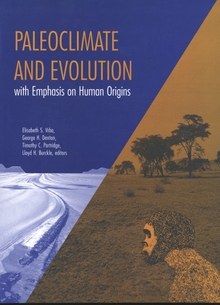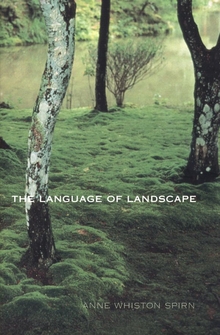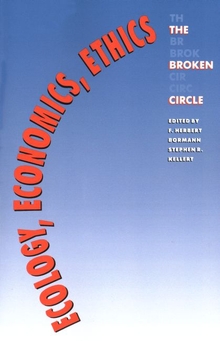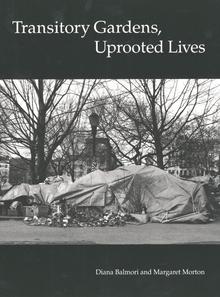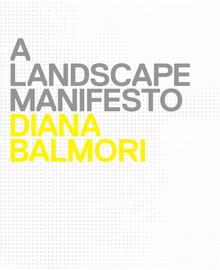Redesigning the American Lawn
WARNING
You are viewing an older version of the Yalebooks website. Please visit out new website with more updated information and a better user experience: https://www.yalebooks.com
A Search for Environmental Harmony
F. Herbert Bormann, Diana Balmori, and Gordon T. Geballe; Edited by Lisa Vernegaard
Out of Print
The authors outline the origins of ideas about the lawn and the reasons for its enduring popularity. They describe the development of ideas about its form and the making of the lawn into an object of beauty. They explain how the lawn industry has encouraged the spread of the "industrial" lawn to sustain high sales of mowers, seeds, fertilizers, pesticides, and irrigation equipment. However, say the authors, industrial lawns can have high environmental costs: for example, power motors contribute to regional air pollution and global warming; excess fertilizers and pesticides wash off our lawns and run into our wells, streams, and lakes; grass clippings that are bagged and hauled away are major contributors to solid waste problems; and the watering of lawns depletes scarce water supplies.
How can we create environmentally sound lawns? The authors offer a variety of ideas--such as moderation in our use of lawn supplements, ecological use of grass varieties, the substitution of hand mowers for power motors, and the use of grass clippings to fertilize the lawn. These strategies can help us to care for conventional lawns in ways less dangerous to the environment. They also propose two more radical alternatives: freedom lawns that allow natural and unrestricted growth of grasses, clover, wildflowers, and other broad-leafed herbaceous plants; and total replacement of the lawn with new landscape designs.
By choosing these alternatives—which can be aesthetically pleasing as well as ecologically correct—we can unite our environmental concerns with direct personal action, acting locally while thinking globally and creating a new garden aesthetic in the process.
"Redesigning the American Lawn is a considerable achievement: A manual for improving a large part of the American Environment while reducing pollution, saving Americans a large amount of money, and beautifying the landscape."—Edward O. Wilson, Baird Professor of Science, Harvard University
"Redesigning the American Lawn gives homeowners with yards an opportunity to "think globally and act locally." The book offers lawnowners a chance to enjoy their grounds without polluting the environment with pesticides, fertilizer and other lawn care products which contribute to non-point pollution."—Fred Krupp, Executive Director, Environmental Defense Fund
"Redesigning The American Lawn literally brings the environmental quandary to our front door. What better way to understand the world than in blades of grass?"—Dr. Thomas E. Lovejoy, Assistant Secretary for External Affairs, Smithsonian Institution
"It's about time someone examined the effects—environmental, medical, and aesthetic—of our odd addiction to manicured greensward. The freedom lawn described herein is a great step forward; one hopes the authors will turn their attention to golf courses next."—Bill McKibben, author of The End of Nature
"An extremely readable summation of the origins of the addiction to lawns, and of the environmental reasons why Americans should kick the habit."—Anne Raver, New York Times Book Review
"Redesigning the American Lawn is a good starting point for examining our ideas of natural beauty. . . . the book offers a rational approach for undoing the damage brought on by too much faith in technology."—Robin Hohman, New Haven Register
"This book is wide-ranging, balanced, and imaginative. . . . A good buy."—Library Journal
"Redesigning the American Lawn . . . celebrates the lawn while detailing its impact on the environment. Rich with history, methodical in its analysis, and revelationary <!--sic--> in its simplicity, the trio makes a coherent case."—Joshua Mamis, The New Haven Advocate
"[The authors] suggest a number of strategies for beautiful yards that are less dangerous to the earth than those that pollute the air, threaten water and fossil fuel supplies, add unnecessary clippings to landfill sites, and threaten human and animal health with chemicals."—Mary Fran Cahill, Milwaukee Journal
"Eye-opening."—Mac Griswold, Town and Country
"Should be a best-seller, to be read by everyone who has a lawn."—Choice
"A wider planning audience will find Redesigning the American Lawn a good practical guide to current debates. The authors' suggestions for reform are eminently practical."—David Charles Sloane, Journal of American Planning Association
"Beyond the appreciation of beauty, if you want sound evidence that lawn care can have a global effect, read Redesigning the American Lawn."—Herman Forest, Cookeville Herald-Citizen
"Conventionally maintained lawns are sterile, unhealthy habitats that consume time and precious resources and poison watersheds. This classic book, updated and in a new format, provides an essential foundation for a new culture of conservation starting at home."—Frank Gill, Senior Vice-President for Science, National Audubon Society
"Redesigning the American Lawn is a great guide to a new kind of environmentally sensitive landscape. For those of us who are gardeners or lawn enthusiasts, it makes clear that through our choices and our actions we can indeed practice the kind of individual stewardship increasingly needed to assure we leave this good earth a better place for our children."—William K. Reilly, Senior Fellow, World Wildlife Fund, Former Administrator, U.S. Environmental Protection Agency
Publication Date: February 22, 1995




